Abstract
Imposed upper airway obstruction was diagnosed as the cause of recurrent and severe cyanotic episodes in 14 patients. Episodes started between 0.8 and 33 months of age (median 1.4) and occurred over a period of 0.8 to 20 months (median 3.5). Diagnosis was made by covert video surveillance, instituted after either (a) the observation that episodes began only in the presence of one person, or (b) characteristic findings on physiological recordings, lasting between 12 hours and three weeks, performed in hospital or at home. Surveillance was undertaken for between 15 minutes and 12 days (median 24 hours) and resulted in safety for the patient and psychiatric assessment of the parent: mother (n = 12), father (n = 1), and grandmother (n = 1). These revealed histories of sexual, physical, or emotional abuse (n = 11), self harm (n = 9), factitious illness (n = 7), eating disorder (n = 10), and previous involvement with a psychiatrist (n = 7). Management of the abusing parents is complex, but recognition of their psychosocial characteristics may allow earlier diagnosis. Imposed upper airway obstruction should be considered and excluded by physiological recordings in any infant or young child with recurrent cyanotic episodes. If physiological recordings fail to substantiate a natural cause for episodes, covert video surveillance may be essential to protect the child from further injury or death.
Full text
PDF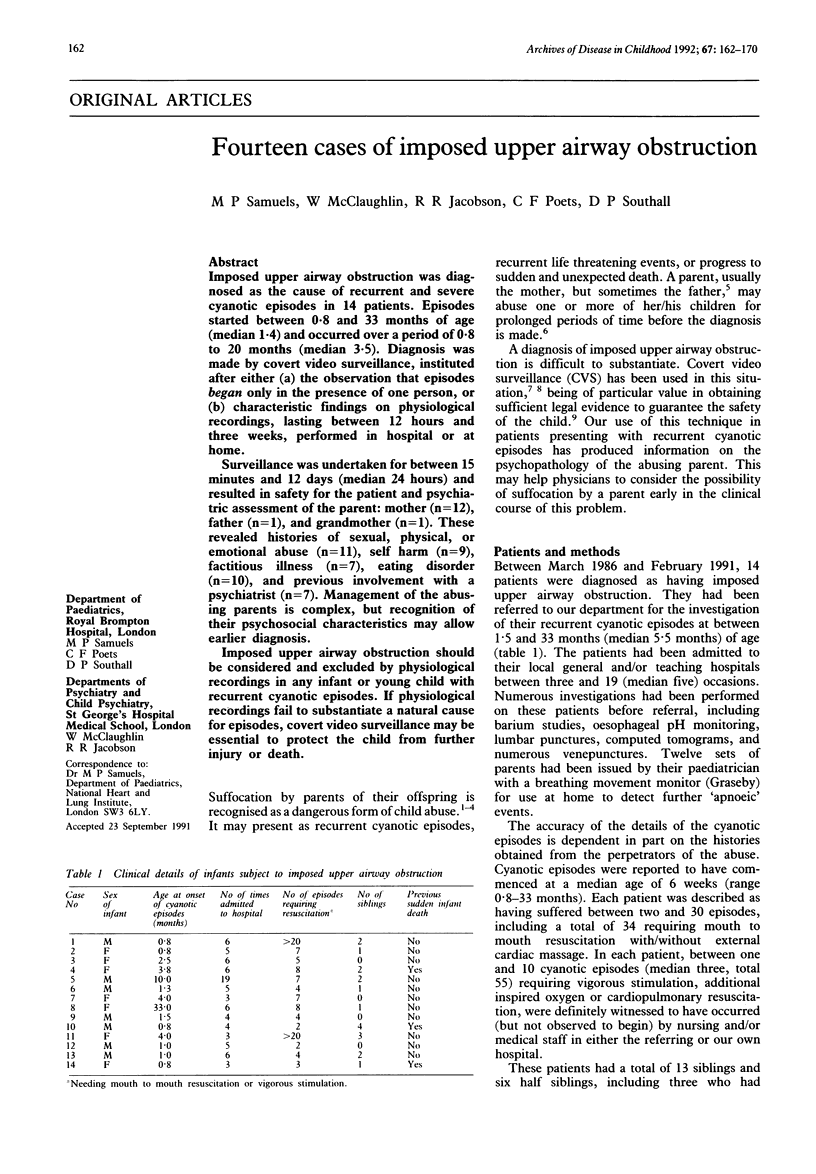
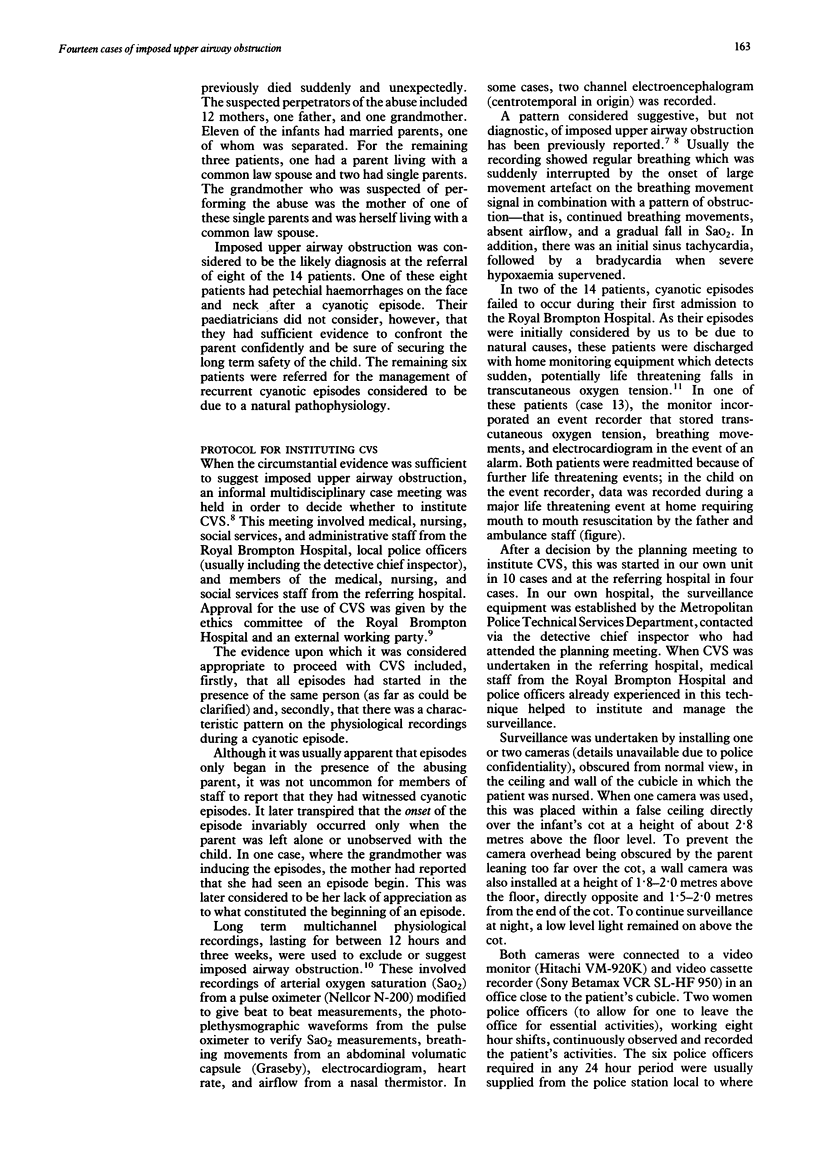
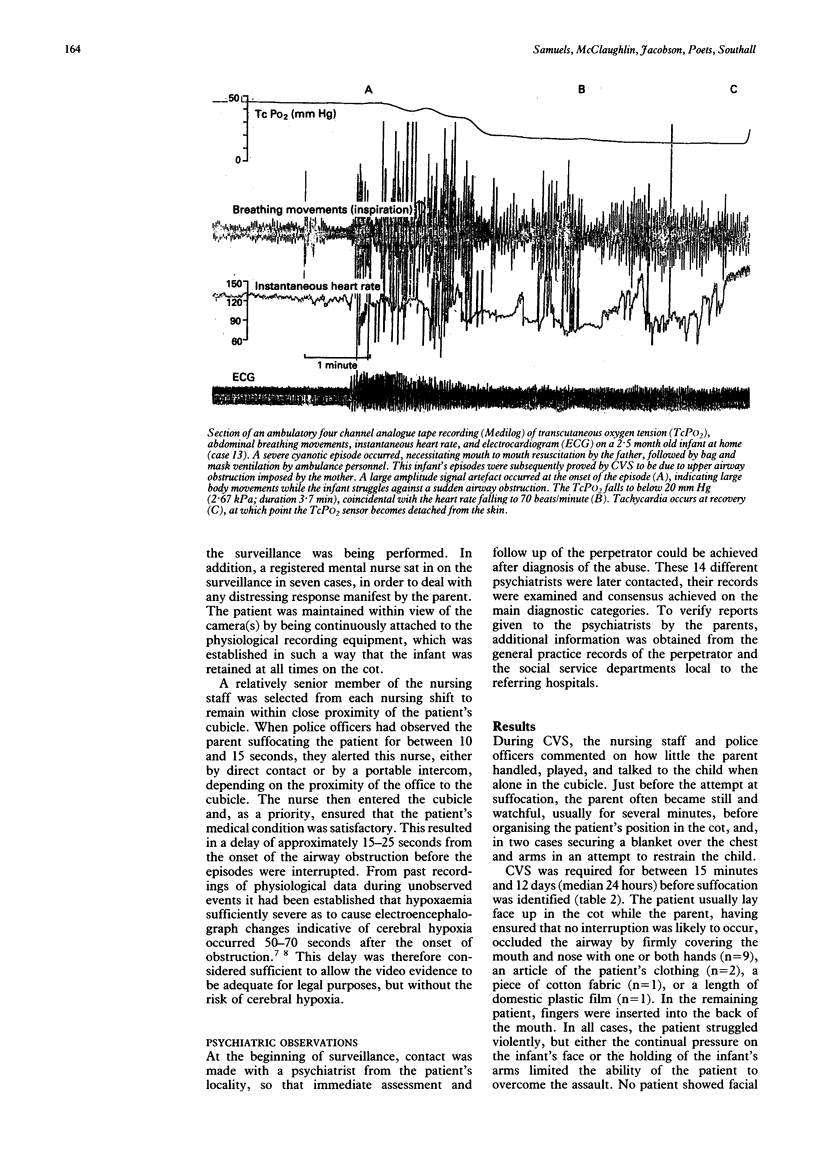
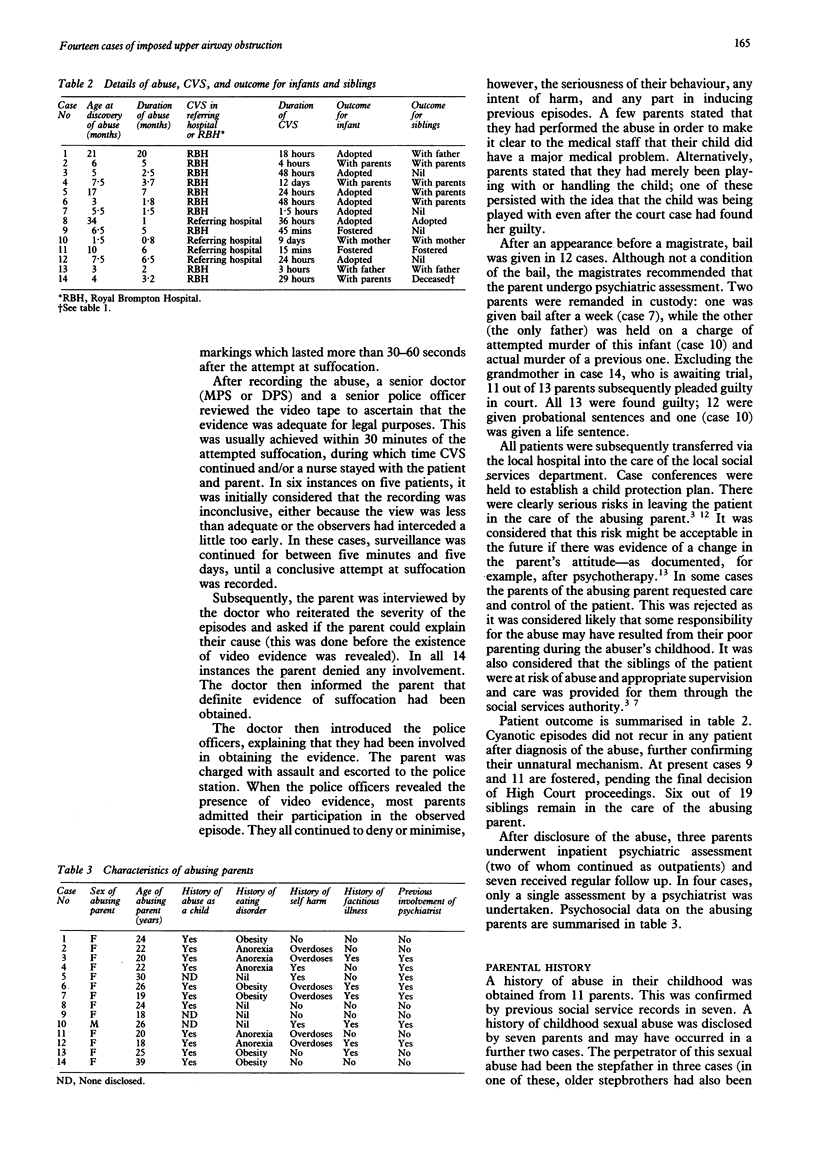
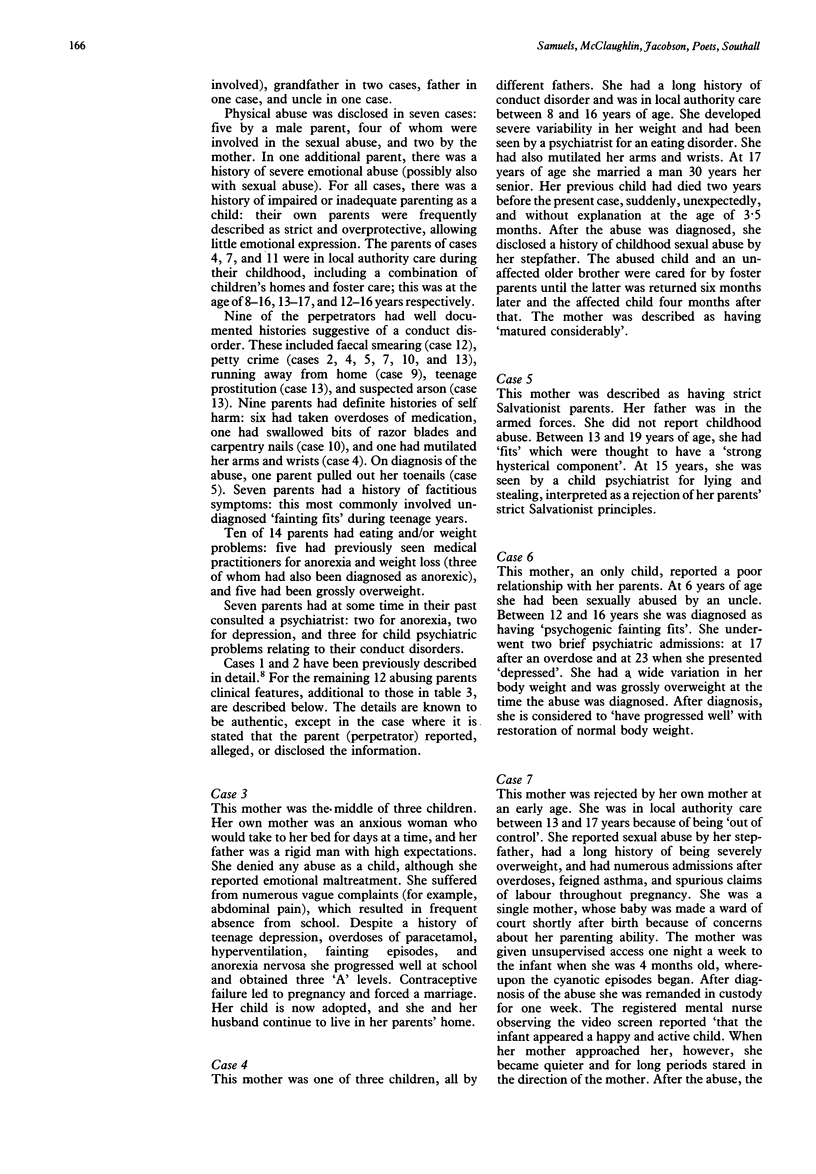
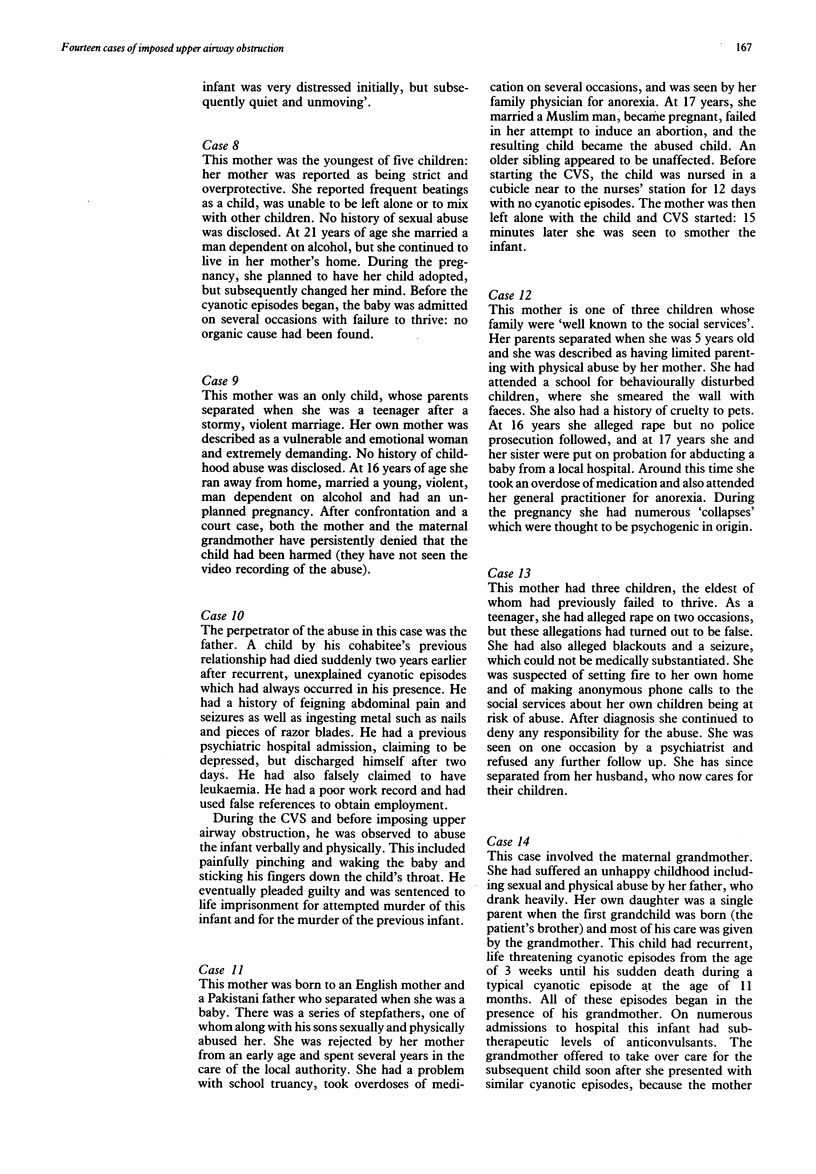
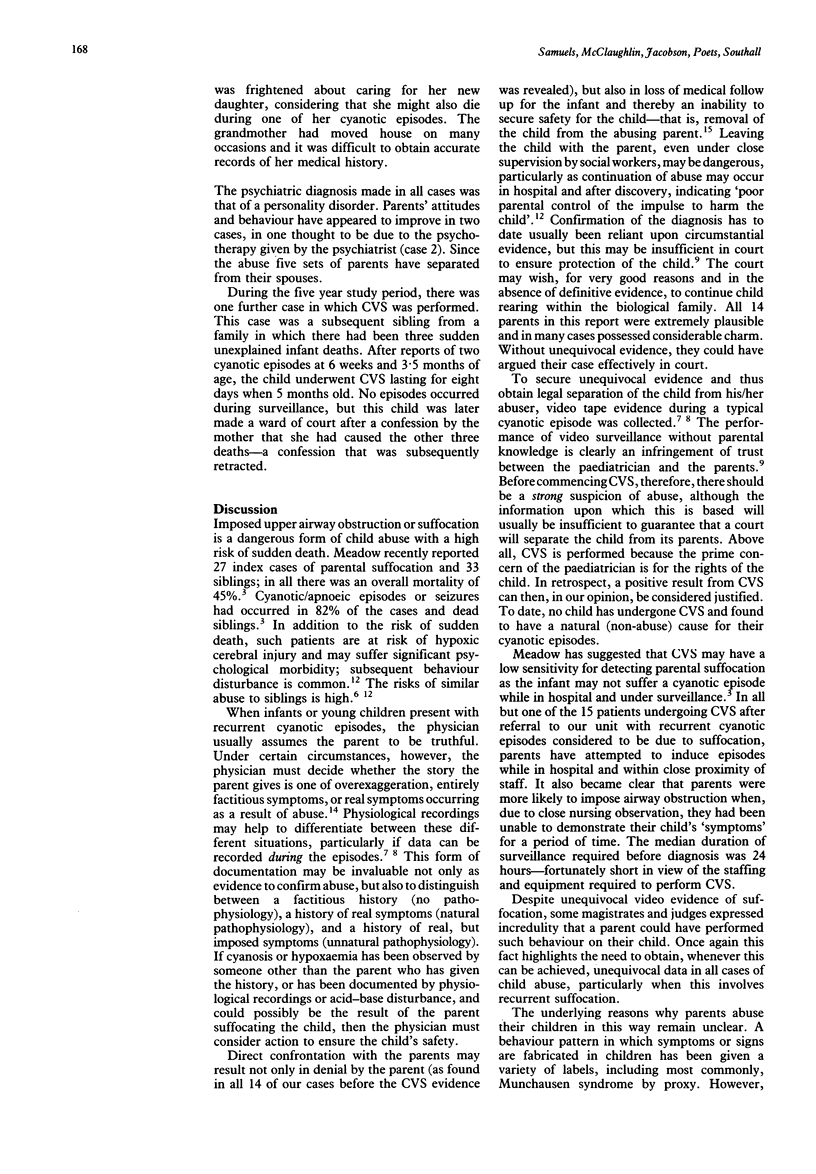
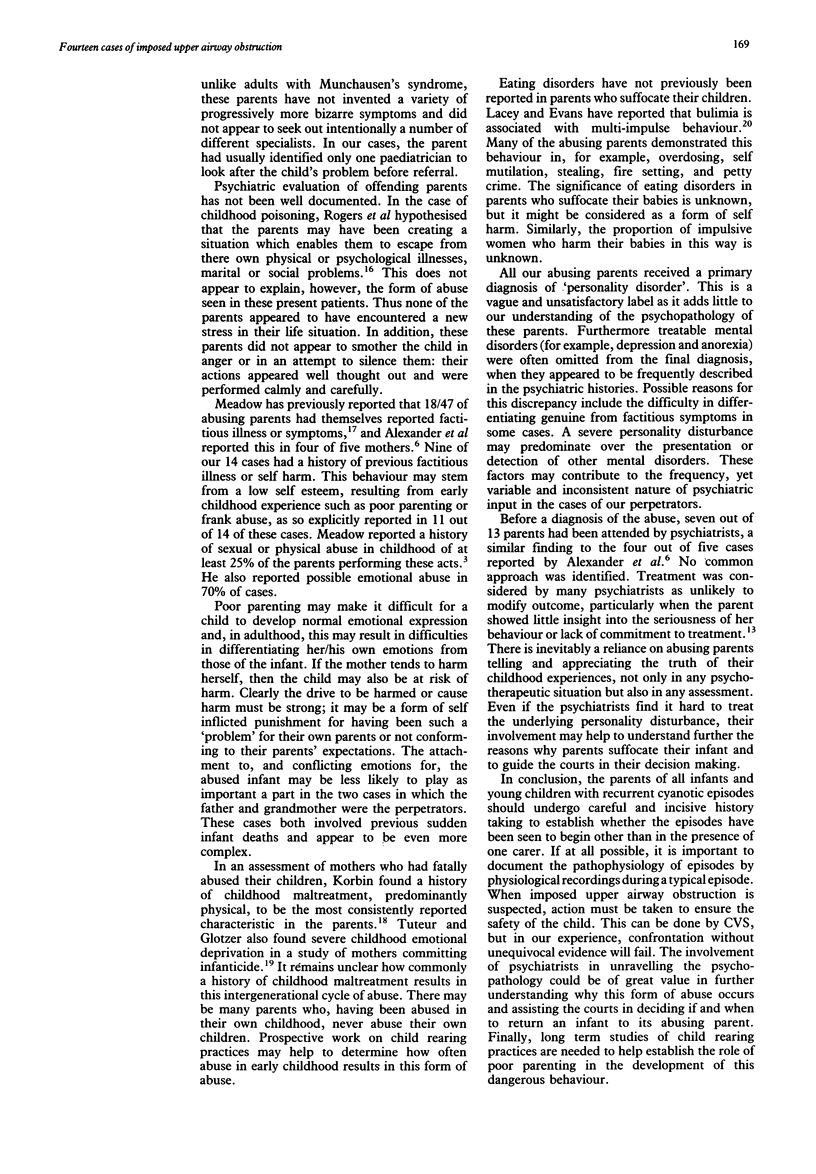
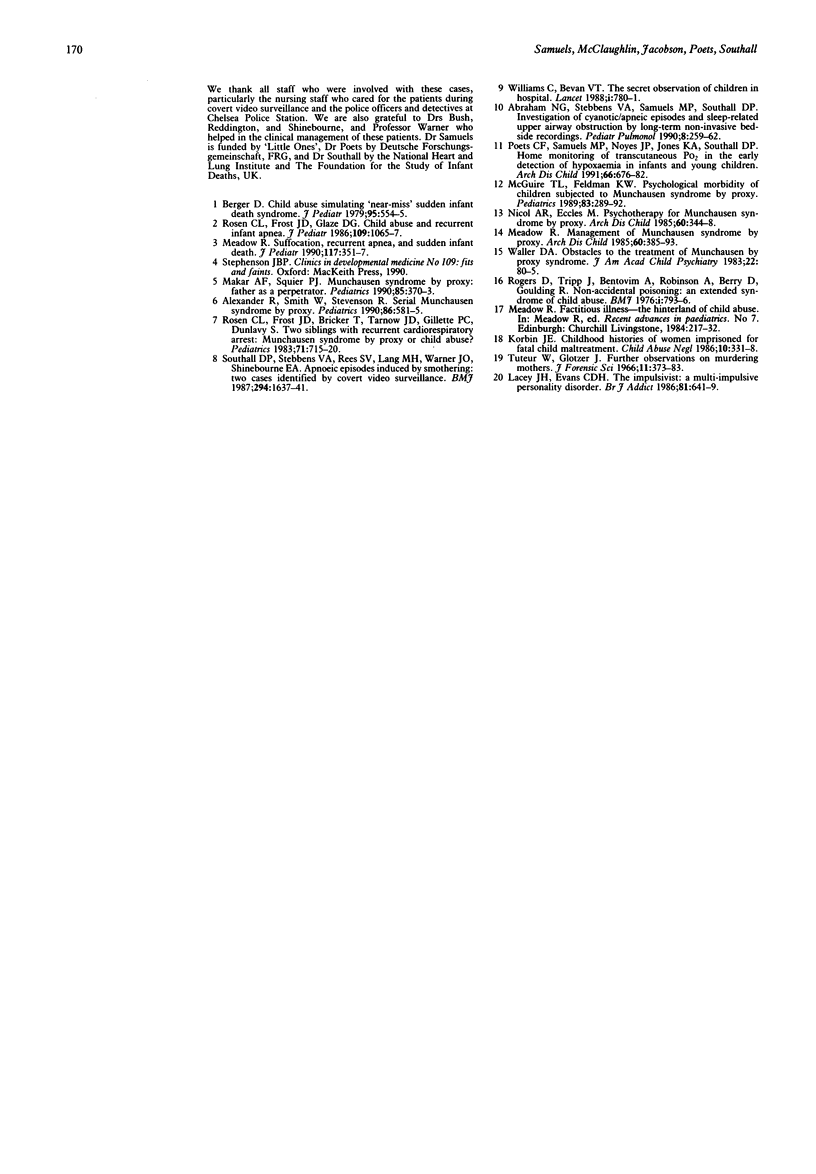
Selected References
These references are in PubMed. This may not be the complete list of references from this article.
- Abraham N. G., Stebbens V. A., Samuels M. P., Southall D. P. Investigation of cyanotic/apneic episodes and sleep-related upper airway obstruction by long-term non-invasive bedside recordings. Pediatr Pulmonol. 1990;8(4):259–262. doi: 10.1002/ppul.1950080409. [DOI] [PubMed] [Google Scholar]
- Alexander R., Smith W., Stevenson R. Serial Munchausen syndrome by proxy. Pediatrics. 1990 Oct;86(4):581–585. [PubMed] [Google Scholar]
- Berger D. Child abuse simulating "near-miss" sudden infant death syndrome. J Pediatr. 1979 Oct;95(4):554–556. doi: 10.1016/s0022-3476(79)80763-5. [DOI] [PubMed] [Google Scholar]
- Korbin J. E. Childhood histories of women imprisoned for fatal child maltreatment. Child Abuse Negl. 1986;10(3):331–338. doi: 10.1016/0145-2134(86)90008-6. [DOI] [PubMed] [Google Scholar]
- Lacey J. H., Evans C. D. The impulsivist: a multi-impulsive personality disorder. Br J Addict. 1986 Oct;81(5):641–649. doi: 10.1111/j.1360-0443.1986.tb00382.x. [DOI] [PubMed] [Google Scholar]
- Makar A. F., Squier P. J. Munchausen syndrome by proxy: father as a perpetrator. Pediatrics. 1990 Mar;85(3):370–373. [PubMed] [Google Scholar]
- McGuire T. L., Feldman K. W. Psychologic morbidity of children subjected to Munchausen syndrome by proxy. Pediatrics. 1989 Feb;83(2):289–292. [PubMed] [Google Scholar]
- Meadow R. Management of Munchausen syndrome by proxy. Arch Dis Child. 1985 Apr;60(4):385–393. doi: 10.1136/adc.60.4.385. [DOI] [PMC free article] [PubMed] [Google Scholar]
- Meadow R. Suffocation, recurrent apnea, and sudden infant death. J Pediatr. 1990 Sep;117(3):351–357. doi: 10.1016/s0022-3476(05)81072-8. [DOI] [PubMed] [Google Scholar]
- Nicol A. R., Eccles M. Psychotherapy for Munchausen syndrome by proxy. Arch Dis Child. 1985 Apr;60(4):344–348. doi: 10.1136/adc.60.4.344. [DOI] [PMC free article] [PubMed] [Google Scholar]
- Poets C. F., Samuels M. P., Noyes J. P., Jones K. A., Southall D. P. Home monitoring of transcutaneous oxygen tension in the early detection of hypoxaemia in infants and young children. Arch Dis Child. 1991 Jun;66(6):676–682. doi: 10.1136/adc.66.6.676. [DOI] [PMC free article] [PubMed] [Google Scholar]
- Rogers D., Tripp J., Bentovim A., Robinson A., Berry D., Goulding R. Papers and originals. Br Med J. 1976 Apr 3;1(6013):793–796. doi: 10.1136/bmj.1.6013.793. [DOI] [PMC free article] [PubMed] [Google Scholar]
- Rosen C. L., Frost J. D., Jr, Bricker T., Tarnow J. D., Gillette P. C., Dunlavy S. Two siblings with recurrent cardiorespiratory arrest: Munchausen syndrome by proxy or child abuse? Pediatrics. 1983 May;71(5):715–720. [PubMed] [Google Scholar]
- Rosen C. L., Frost J. D., Jr, Glaze D. G. Child abuse and recurrent infant apnea. J Pediatr. 1986 Dec;109(6):1065–1067. doi: 10.1016/s0022-3476(86)80301-8. [DOI] [PubMed] [Google Scholar]
- Southall D. P., Stebbens V. A., Rees S. V., Lang M. H., Warner J. O., Shinebourne E. A. Apnoeic episodes induced by smothering: two cases identified by covert video surveillance. Br Med J (Clin Res Ed) 1987 Jun 27;294(6588):1637–1641. doi: 10.1136/bmj.294.6588.1637. [DOI] [PMC free article] [PubMed] [Google Scholar]
- Tuteur W., Glotzer J. Further observations on murdering mothers. J Forensic Sci. 1966 Jul;11(3):373–383. [PubMed] [Google Scholar]
- Waller D. A. Obstacles to the treatment of Munchausen by Proxy syndrome. J Am Acad Child Psychiatry. 1983 Jan;22(1):80–85. doi: 10.1097/00004583-198301000-00013. [DOI] [PubMed] [Google Scholar]
- Williams C., Bevan V. T. The secret observation of children in hospital. Lancet. 1988 Apr 2;1(8588):780–781. doi: 10.1016/s0140-6736(88)91596-6. [DOI] [PubMed] [Google Scholar]


